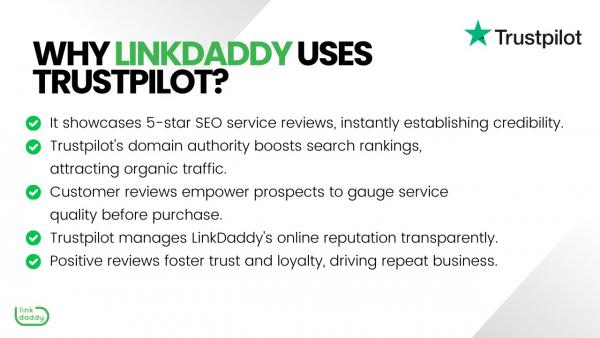LinkDaddy Cloud Services Press Release: Exclusive Announcements
LinkDaddy Cloud Services Press Release: Exclusive Announcements
Blog Article
A Practical Strategy to Executing Cloud Services for Maximum ROI

Assessing Current Facilities
When evaluating the feasibility of applying cloud solutions for maximum return on investment, the first action includes analyzing the present infrastructure in position. Cloud Services. Recognizing the existing equipment, software program, network capabilities, and storage space systems is vital to establish the compatibility and integration demands for moving to the cloud
Evaluation of the present framework includes performing a comprehensive audit to recognize strengths, weaknesses, and potential areas for renovation. It is important to evaluate elements such as web server capability, information protection steps, redundancy protocols, and scalability alternatives. By gaining a clear understanding of the existing state of the framework, companies can efficiently intend and strategize the change to cloud services.
Moreover, assessing the current infrastructure allows businesses to align their cloud fostering technique with their particular requirements and objectives. This assessment supplies important understandings right into maximizing resource use, enhancing performance, and making sure smooth integration with cloud options. Eventually, an extensive evaluation of the existing infrastructure lays the structure for an effective cloud execution that takes full advantage of return on investment.

Identifying Organization Requirements
In order to optimize resource use and straighten cloud fostering with specific business goals, the next crucial step after examining the existing facilities is recognizing the distinctive requirements of the company. Comprehending the organization requirements is important to customize the cloud services effectively. This procedure involves involving with vital stakeholders across departments to collect insights right into the company's goals, difficulties, and chances. By performing extensive interviews, studies, and evaluation of existing workflows, it is possible to pinpoint locations where cloud services can offer the most significant influence.
Identifying company needs additionally involves assessing variables such as scalability needs, data security issues, conformity regulations, and budget plan constraints. Each of these aspects plays a critical role in identifying one of the most suitable cloud options for the company. By straightening the abilities of cloud services with the particular needs of business, companies can make sure that their financial investment in cloud modern technology provides optimum return on investment. Additionally, by attending to these requirements ahead of time, organizations can avoid costly mistakes and make sure a smooth shift to the cloud environment.
Picking the Right Cloud Provider
Picking the suitable cloud provider is a pivotal decision that can significantly affect the success of a company's cloud adoption approach. When selecting a cloud provider, several variables have to be considered to make sure that the picked service provider straightens with the organization's objectives and demands. It is vital to examine the supplier's reputation, integrity, safety and security measures, conformity accreditations, and scalability alternatives.
Online reputation plays a vital function as it reflects the provider's record in supplying high quality solutions and conference client expectations (universal cloud Service). Dependability is another key consideration, as downtime or solution go to my blog disruptions can have damaging results on organization operations. Safety is paramount when handing over information to a 3rd party, so it is essential to assess the company's safety and security procedures and information protection procedures
Additionally, compliance qualifications make certain that the copyright sticks to market criteria and regulations, which is specifically crucial for firms running in controlled industries. Lastly, scalability choices are necessary to accommodate future development and changing business needs successfully. By very carefully evaluating these factors, companies can select a cloud provider that best suits their needs and maximizes the return on investment.
Planning Migration and Execution
To ensure a seamless change to basics shadow solutions, thorough planning and calculated execution of movement and implementation procedures are crucial. The initial step in this procedure includes conducting a complete assessment of the Home Page existing facilities and applications to identify the compatibility with cloud services.
When the movement strategy is in area, the application phase need to focus on prioritizing work based on urgency and complexity. This phased technique enables for screening and validation at each stage, minimizing disruptions and making sure a smooth shift. It is vital to establish clear communication networks and provide adequate training to staff members to facilitate adoption and deal with any issues.
Continuous surveillance and optimization post-implementation are vital to guarantee that the cloud services are supplying the expected ROI. Regular performance reviews and responses systems can assist in recognizing locations for enhancement and making best use of the advantages of cloud solutions.
Tracking Performance and Optimization
Effective surveillance and optimization of cloud services performance play a critical function in making the most of ROI and guaranteeing operational performance. By continuously keeping track of the efficiency of cloud services, organizations can determine potential issues quickly, optimize source allowance, and enhance total system efficiency. Real-time tracking tools allow for the monitoring of crucial efficiency indicators, such as response times, source usage, and accessibility, enabling positive issue resolution and informed decision-making.

Additionally, utilizing anticipating analytics and device understanding formulas can aid organizations anticipate future performance patterns, expect prospective bottlenecks, and proactively maximize cloud sources. Constant performance tracking and optimization not just boost the customer experience but also add to cost financial savings and enhanced ROI in the lengthy run.
Final Thought
In conclusion, the effective execution of cloud services requires an extensive assessment of current infrastructure, recognition of organization needs, selection of the ideal cloud provider, precise preparation for migration and implementation, and continuous monitoring for performance optimization. By complying with these actions faithfully, organizations can optimize their return on financial investment in cloud services and achieve better efficiency and agility in their operations.
In today's busy service setting, the implementation of cloud solutions has actually ended up being a critical aspect in improving operational effectiveness and driving significant return on financial investment (ROI) By meticulously evaluating existing infrastructure, recognizing specific service needs, selecting the ideal cloud solution company, and diligently planning the migration and implementation procedure, organizations can position themselves for success in the cloud. Understanding the company needs is vital to customize the cloud solutions properly. By aligning the abilities of cloud services with the certain needs of the company, business can guarantee that their financial investment in cloud innovation delivers optimum return on financial investment.Choosing the optimal cloud service copyright is a crucial decision that can dramatically affect the success of a firm's cloud fostering strategy.
Report this page